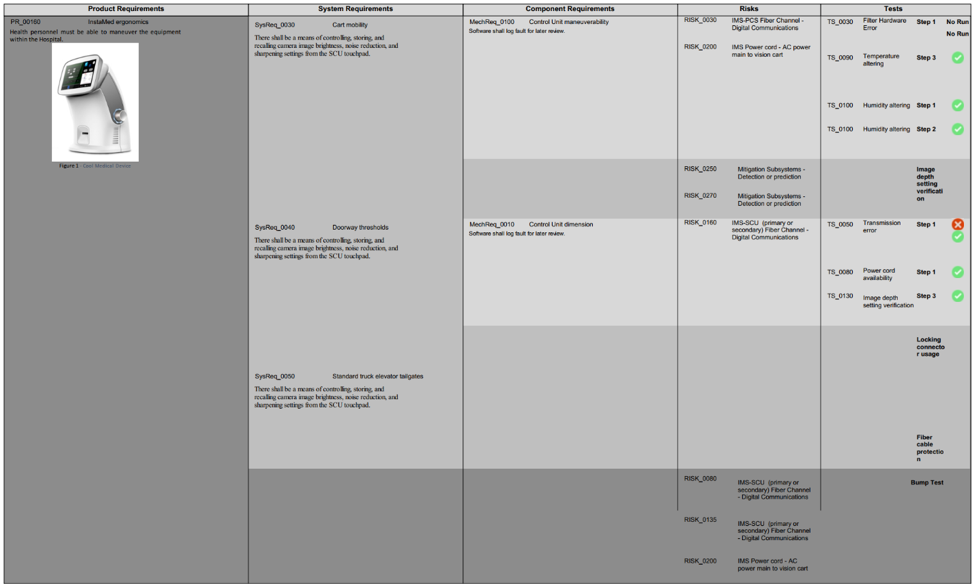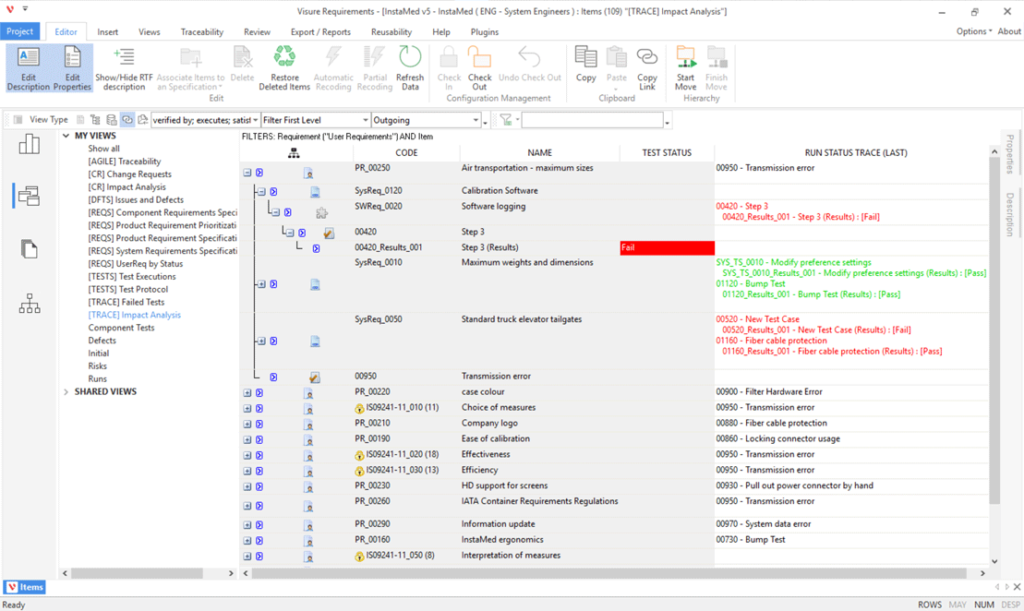How To Create Traceability Matrix In Alm
Requirements Traceability Matrix (RTM)
All software projects are really just collections of implemented requirements, including user requirements, UI requirements, business requirements, technical requirements, functional requirements, non-functional requirements, and others. In the past, when software projects were much smaller, and development cycles were much longer, tracking requirements wasn't nearly as big of a challenge as it is today.
Without a well-defined set of requirements, software projects have a very high risk of failure, which is why it's paramount to have a reliable method for tracking requirements from their conception, through the specification and development, and all the way down to their deployment. The Requirements Traceability Matrix (RTM), is one such method, and this article explains everything you need to know about it.
What Is an RTM?
To explain the Requirements Traceability Matrix (RTM), we first need to talk about Requirements Traceabilityin general. The IEEE Systems and Software Engineering Vocabulary define it as the ability to describe and follow the life of a requirement in both a forward and backward direction.
As such, Requirements Traceability allows us to identify both the source of a requirement as well as all other artifacts in the lifecycle such as tests, use cases, and project planning. To clearly document these complex links, a document called Requirements Traceability Matrix is used, accurately mapping out the relationships between requirements, test cases, and defects.
With a well-thought-out RTM, it's easy to perform a graphical analysis of the traceability and verify that all the requirements are fulfilled by validating their corresponding test cases.
Different Types of RTM
RTMs are sometimes divided into three sub-types:
- Forward traceability RTMs: The purpose of this matrix is to ensure that the project progresses in the desired direction by mapping requirements to test cases.
- Backward traceability RTMs: The purpose of this matrix is to ensure that the project remains on the right track, and the original scope remains the same.
- Bidirectional traceability RTMs: This matrix encompasses both forward and backward traceability, ensuring that all the specified requirements have corresponding test cases and vice versa.
Requirements Traceability Matrix Example
In the past, RTMs were created mostly using spreadsheet software applications such as Microsoft Excel or LibreOffice Calc, with requirements placed across the top row and test cases in the first column. This manual approach works fine when there just a few requirements and test cases to track, but it becomes extremely time-consuming and tedious with larger projects. Furthermore, RTMs created using spreadsheet software applications are difficult to maintain, presenting an additional burden for already busy developers.
Fortunately, comprehensive requirements management tools such as Visure Requirements can effortlessly generate detailed RTMs displaying elements both in column and row headers, with each cell indicating whether the elements in the corresponding column and row are traced or not, and the direction of the trace, if relevant.

The image above shows an example of an RTM generated by Visure Requirements. As you can see, the RTM includes product requirements, system requirements, component requirements, risks, and tests, but Visure Requirements users can choose what exactly they want to include.
Why Do We Need to Trace Requirements?
The ability to easily track requirements and associated test cases is only one reason why RTMs are indispensable in software development. By providing an at-a-glance roadmap, RTMs greatly reduce the effort required to do a thorough impact analysis and identify the potential consequences of a change or estimate what needs to be modified to accomplish a change.
RTMs empower test managers to plan better and more efficiently optimize the amount of testing necessary, eliminating duplication and leakage. When test managers can easy to track the overall test execution status and identify the test cases which needs to be updated in case of a change in a requirement, they can accomplish more in less time, which benefits the entire team.
Having a detailed RTM is also important when it comes to documentation and auditing. When test cases are linked to requirements, complete traceability becomes a matter of a simple click—something all project members and stakeholders are guaranteed to appreciate.

How to Trace Requirements with an RM Tool?
The process of creating a Requirements Traceability Matrix should begin with goal setting to specify what the RTM should deliver. As we explained earlier, there are different types of RTM, and it's important to gather the right information for the right matrix.
The next step is requirements tracing. These days, requirements tracing is done with the help of a requirements traceability tool, like the one provided by Visure Solutions. Requirements traceability tools make it easy to gather requirements from MS Word, MS Excel, ReqIF, and other sources, manage changes in the different phases of the lifecycle, and identify which requirements have and have not been tested, among other things.
Designed to provide integral support to the complete requirement process, Visure Requirements is a state-of-the-art requirements management software tool that stands out with its customizability and ease of use. Visure Requirements comes with several RTM reports that can be customized and generated with just a few clicks.
A typical RTM generated by Visure Requirements contains product requirements, system requirements, components requirements, risks, and tests. Visure Requirements can export RTMs to multiple different formats, including PDF and XLS.
Managing the entire requirements process in a single tool makes it easy for stakeholders to understand, follow, and participate, and it also helps ensure that the collected requirements actually defined the system required by the users.

Generating Requirement Traceability Matrix (RTM) in Visure
The Requirements Traceability Matrix (RTM) has become indispensable when it comes to ensuring that all project requirements are being met. Its main benefit is the visibility it brings to the entire team, providing everyone with a clear roadmap to follow. Modern requirements tracking tools such as Visure Requirements greatly simplify the process of creating and maintaining an RTM by presenting a single environment for risk management, test management, issue and defect tracking, and change management.
Other related articles:
How To Create Traceability Matrix In Alm
Source: https://visuresolutions.com/requirements-traceability-matrix-rtm/
Posted by: eckmanonswity.blogspot.com

0 Response to "How To Create Traceability Matrix In Alm"
Post a Comment